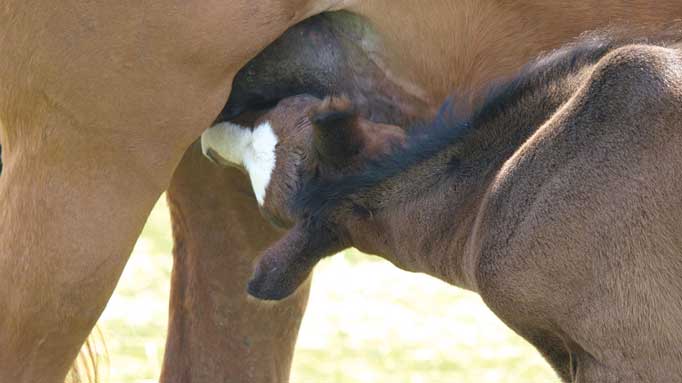Lactose intolerance in foals is, thankfully, rare and arises from the failure of the intestines to secrete the enzyme lactase to hydrolyse (break down into compounds) lactose in the dam’s milk. Not being able to digest lactose – a disaccharide comprised of the monosaccharides glucose and galactose – can result in diarrhea, colic, weight loss, bloating, lethargy, and a general failure to thrive. The undigested and unabsorbed nutrients enter the lower bowel, causing increased bacterial fermentation and retention of water and electrolytes in the intestine. Lactose intolerance may also be caused by bacterial infection or parasitic load in the intestines, specifically Strongyloides westeri (threadworm), Parascaris equorum (large roundworm), and Cryptosporidium (Giardia).
Diagnosis can be made based on clinical signs, or more definitively by administering an oral lactose tolerance test to assess whether lactase activity is present or not. (This test requires a lengthy fast, followed by blood samples being taken at 30-minute intervals for 3-4 hours after dosing.)
When exogenous lactase enzyme is administered orally, the foal’s condition can improve dramatically, especially if lactase deficiency was triggered by viral, bacterial, or protozoal diarrheal disease which is being treated. Feeding a soy-based, non-lactose-containing foal milk replacer, along with early weaning and the introduction of small amounts of high-quality hay or grain to help meet energy needs, may be necessary for lactose-intolerent foals that do not respond favourably to other treatments.

